Five years after the 7.8-magnitude earthquake hit the country, Nepal is back on the map for Buddhist pilgrims and adventurers to learn a philosophy of life and enjoy the natural beauties.
This year, the Nepal Tourism Board aims to boost the number of tourists from 960,000 to 2 million by launching the "Visit Nepal 2020: Lifetime Experience" campaign. The significant heritage sites, fun adventure activities, wildlife sanctuaries and holy places will be highlighted to provide different holiday experiences for people of all ages.
With a rich history, Kathmandu Valley is luring those interested in unique Nepali architecture and diverse cultures. Listed as a World Heritage Site in 1979, Bhaktapur Durbar Square is at the top of the sightseeing agenda, with classy Shikha-style sanctuaries taking visitors back to the Newari kingdoms' heyday.
We left our hotel during rush hour as the streets are flooded with a big wave of horn-blowing motorcycles. Staring out the window of the van, I noticed that Nepal's capital city is developing road infrastructure to better facilitate traffic flow and transportation.
It's a one-hour drive from downtown Kathmandu to the eastern side of the town. Spread over 6.8km², Durbar Square was once the thriving capital of Nepal between the 12th and 15th centuries before becoming a sovereign independent state in the early 18th century.
Surrounded by towering boundary walls and city gates, this old city is home to the former royal palace of the Malla and Shah dynasties and many Hindu monasteries showcasing top-notch Nepali craftsmanship.
Behind the entrance is the Vishnu Temple with its traditional wood roof. It's adorned with carved wood statues of Hindu deities and mythical creatures like Garuda (Vishnu's vehicle and guard) and Krishna, bearing columns that are symbolic of power and long-lasting life.
"King Jitamitra Malla built this old town to pay homage to the Hindu gods, and its name means the City of Devotees. There's also a line of lion statues in front of the gates to guard the property," said local guide Karunakar Upreti.
"This square is recognised for ethnic rituals and festivals like Biska Jatra to celebrate the arrival of the New Year, at which visitors can experience a tongue-piercing ceremony."
Boasting the finest architecture, the grand 55-window palace was erected by King Jitamitra Malla, and royal families lived there until 1769. Now, it's turned into a national museum, whose striking Golden Gate opens widely to welcome visitors to the Mulchok Court that is home to the Taleju Temple.
This sacred sanctuary was built in tribute to the goddesses Taleju Bhawani and Kumari, with the ritual ground allowing only Hindu pilgrims to check in. There's also a secret pond at the centre of the palace, where the queen went to perform a bathing ritual and pray to the god Vishnu.
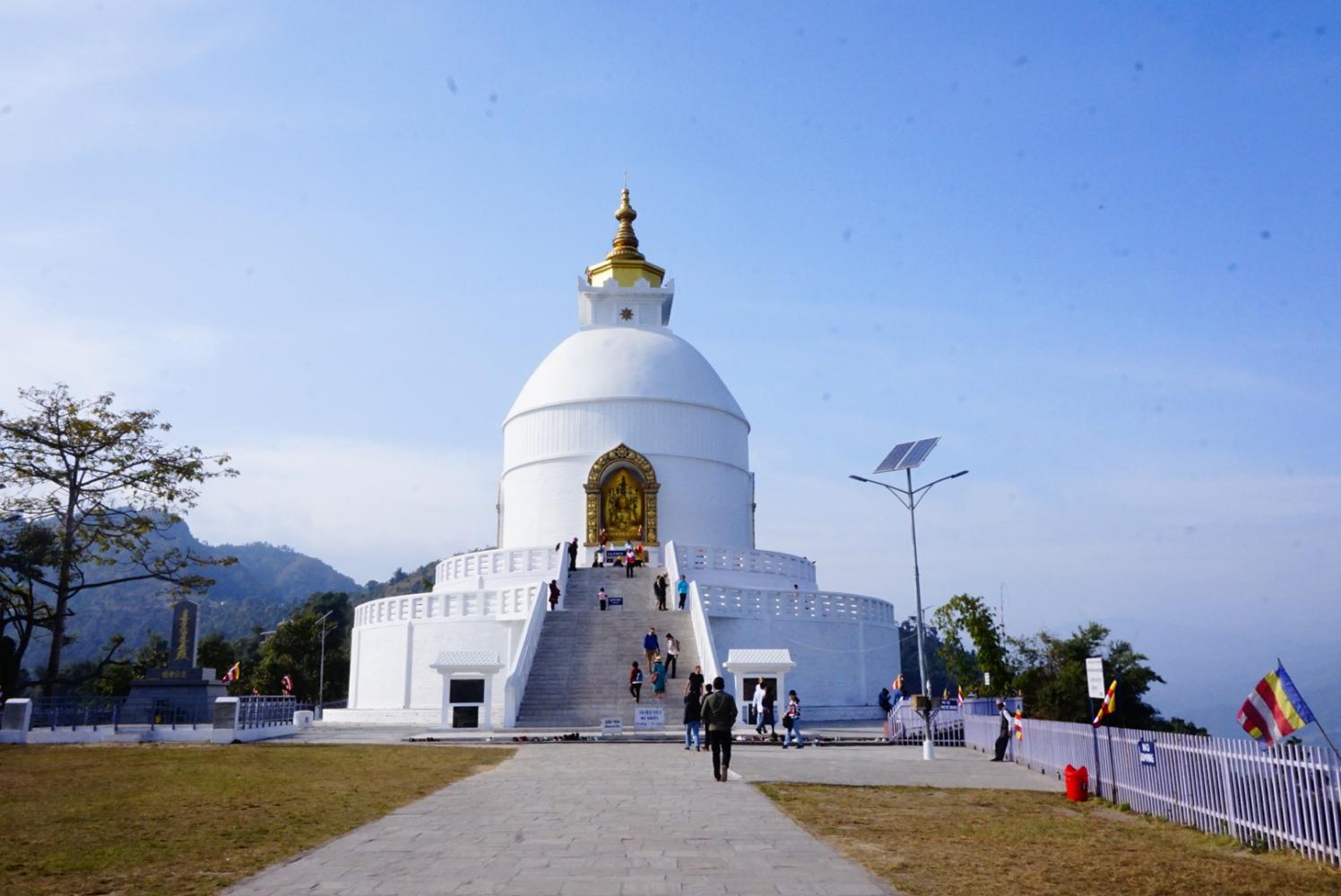
World Peace Pagoda.

Bhaktapur Durbar Square is lined with shopping alleys.

Nyatapola Temple is still under extensive restoration.
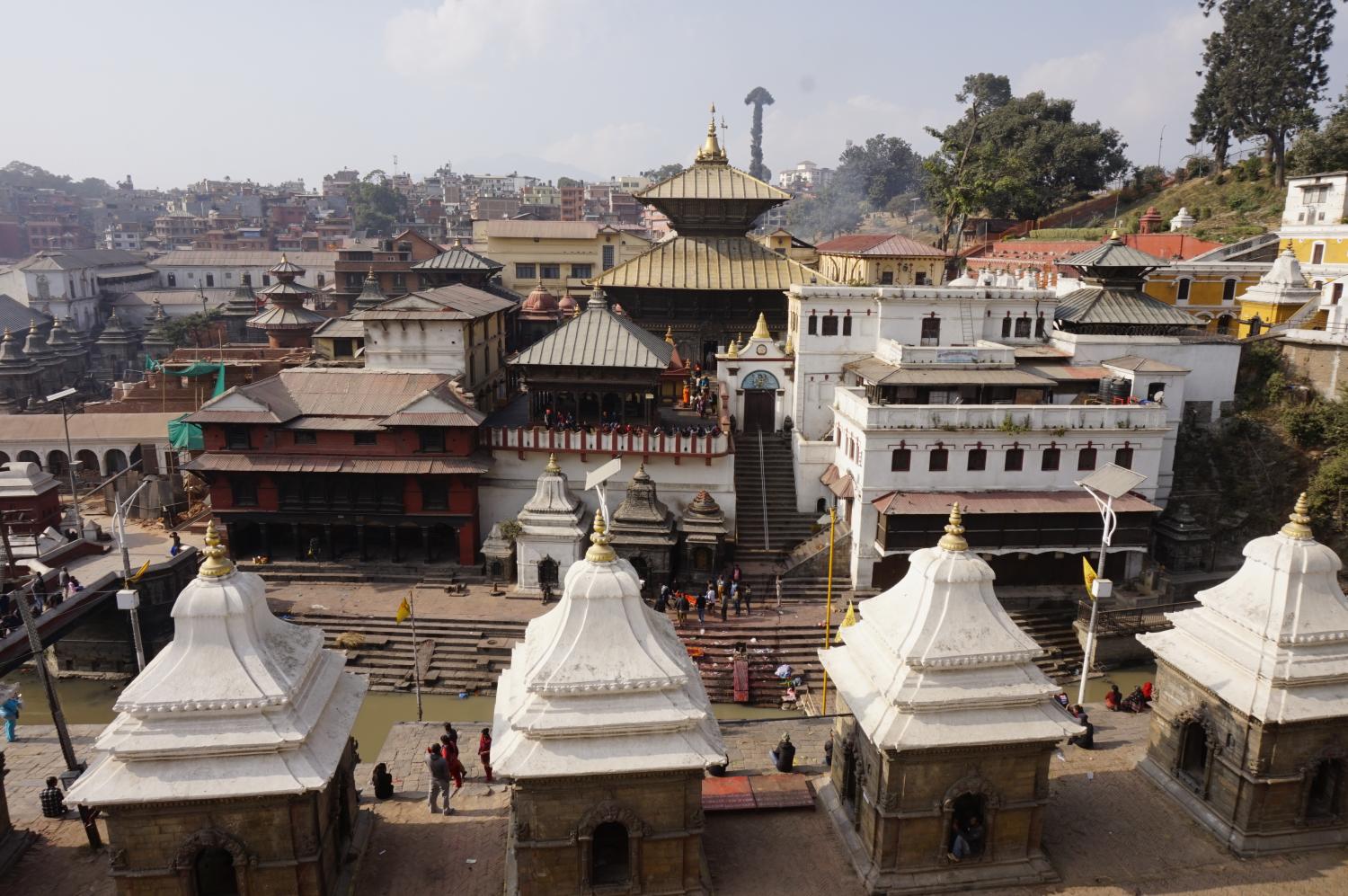
Pashupatinath Temple.

The Golden Gate.
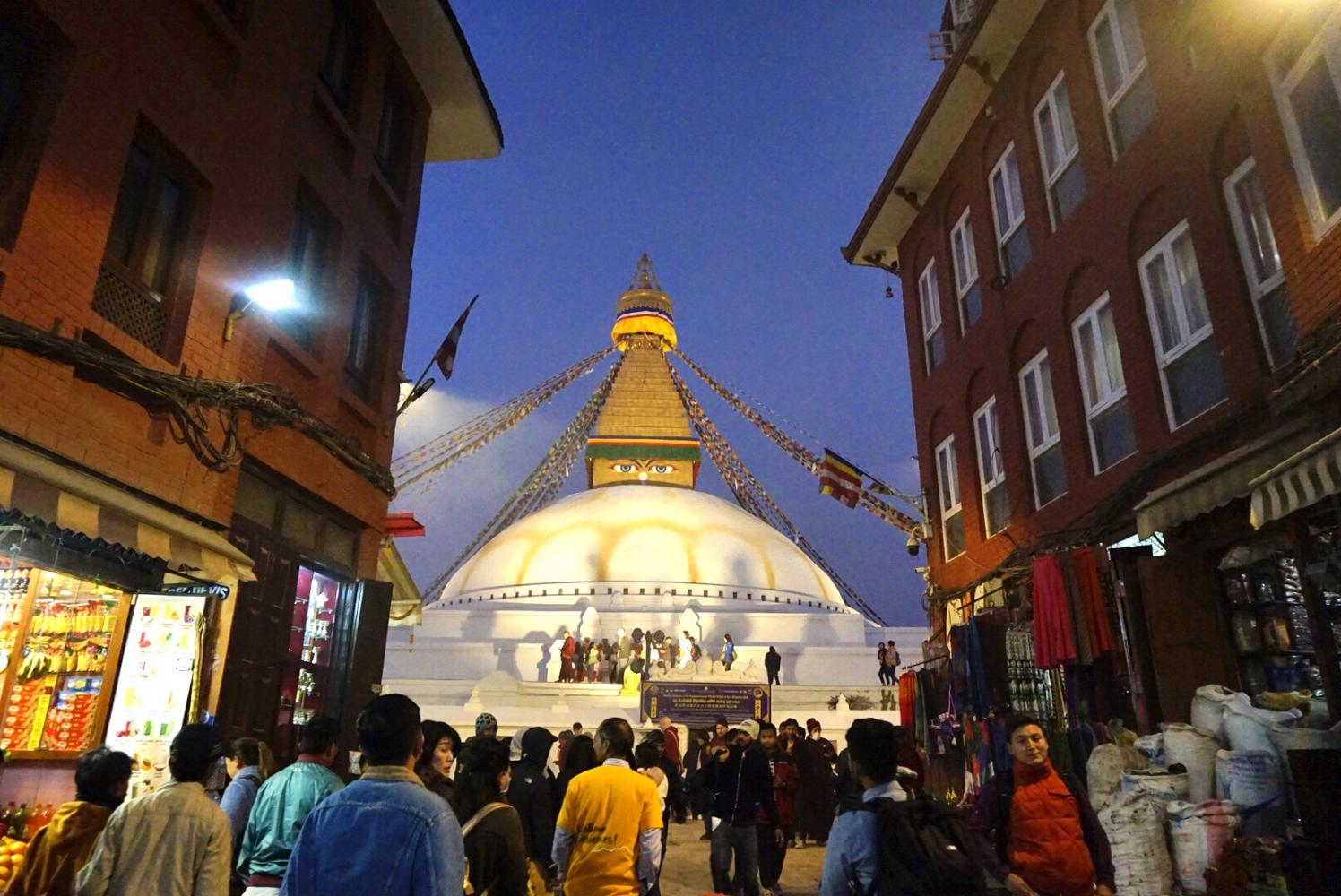
Boudhanath Stupa.

Phewa Lake.
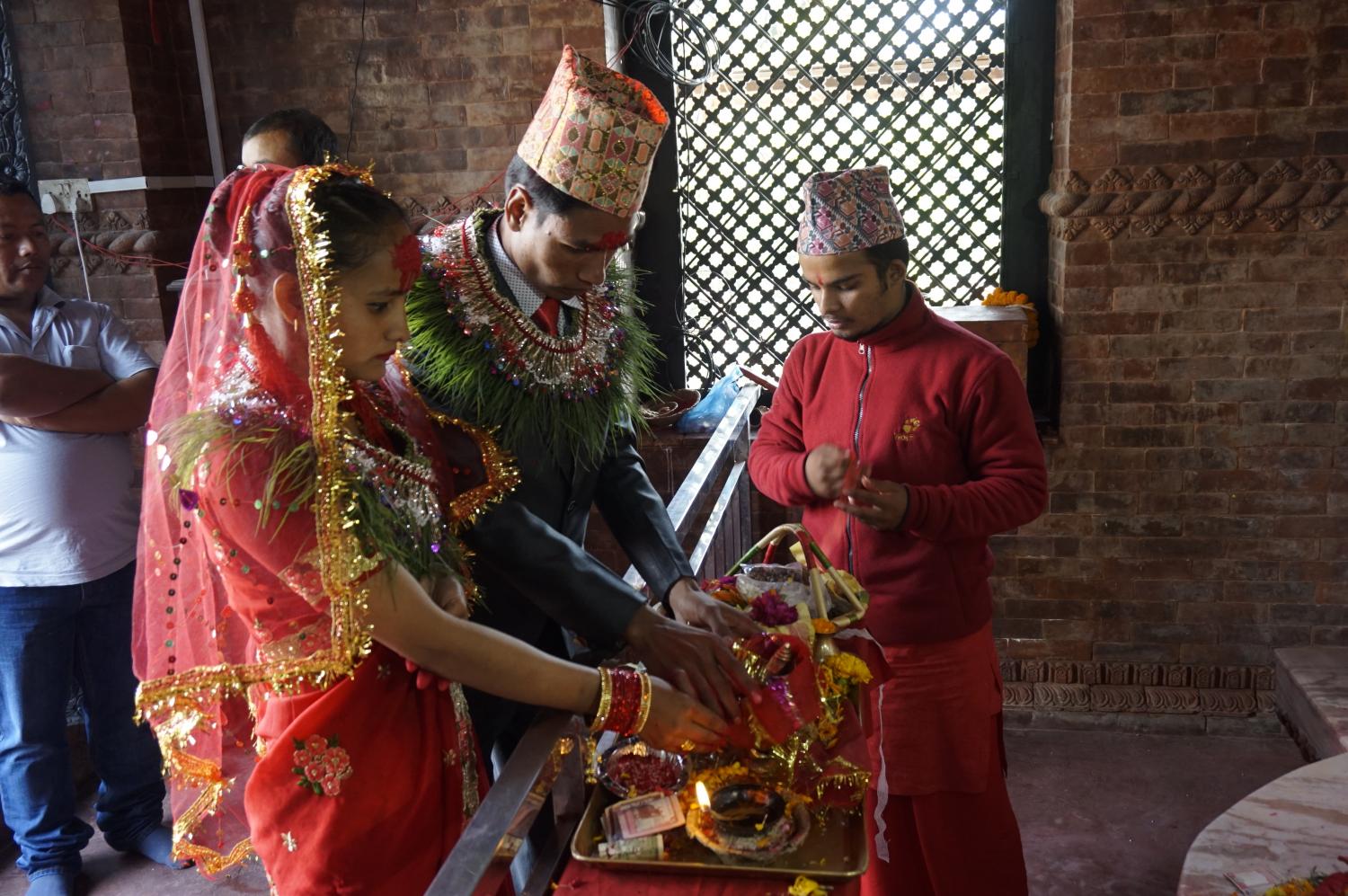
Bindabasini Temple.

The 55-window Palace in Bhaktapur Durbar Square.

The 55-window Palace in Bhaktapur Durbar Square.

A secret pond at the palace.
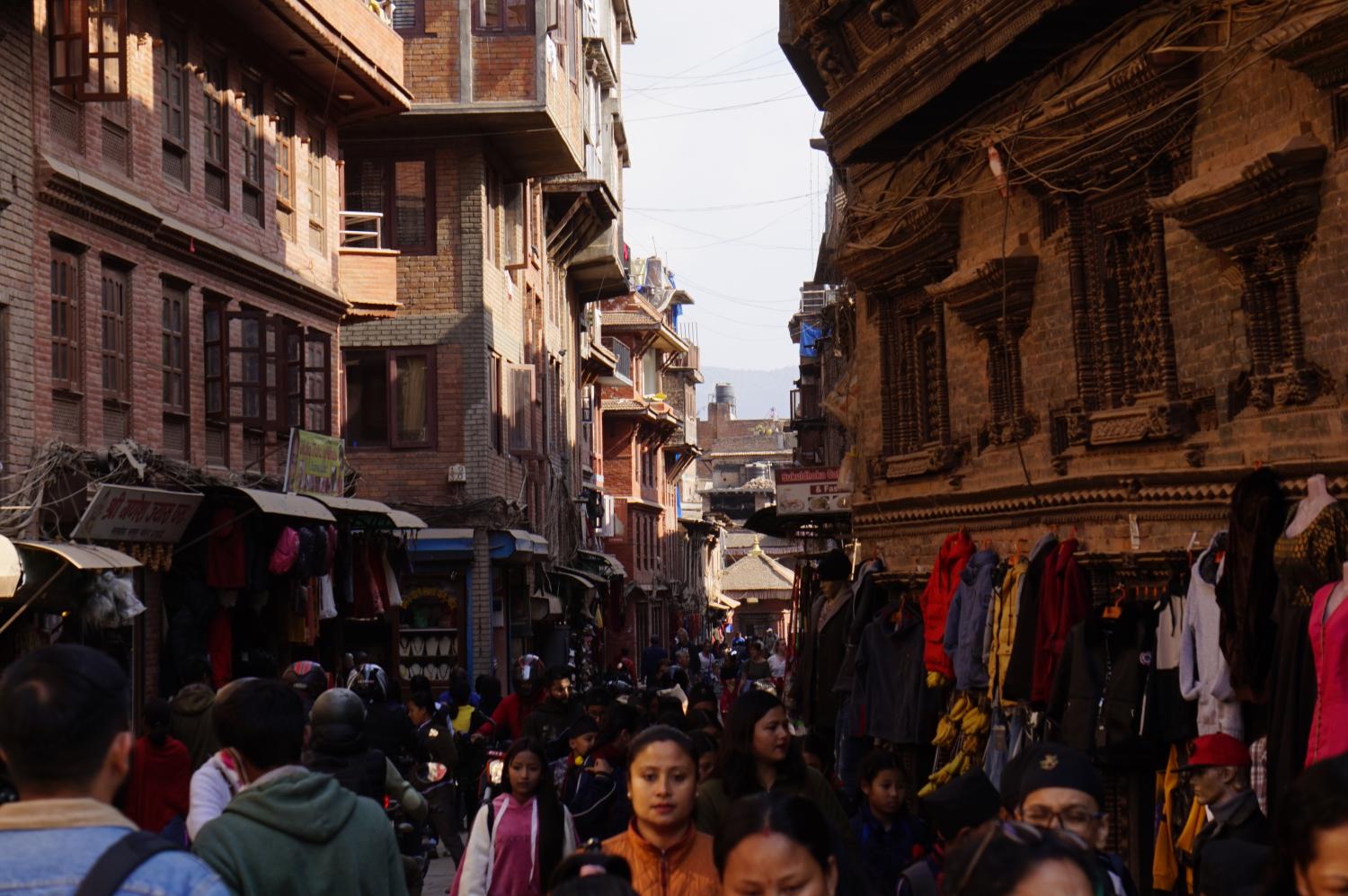
Bhaktapur Durbar Square is lined with shopping alleys.
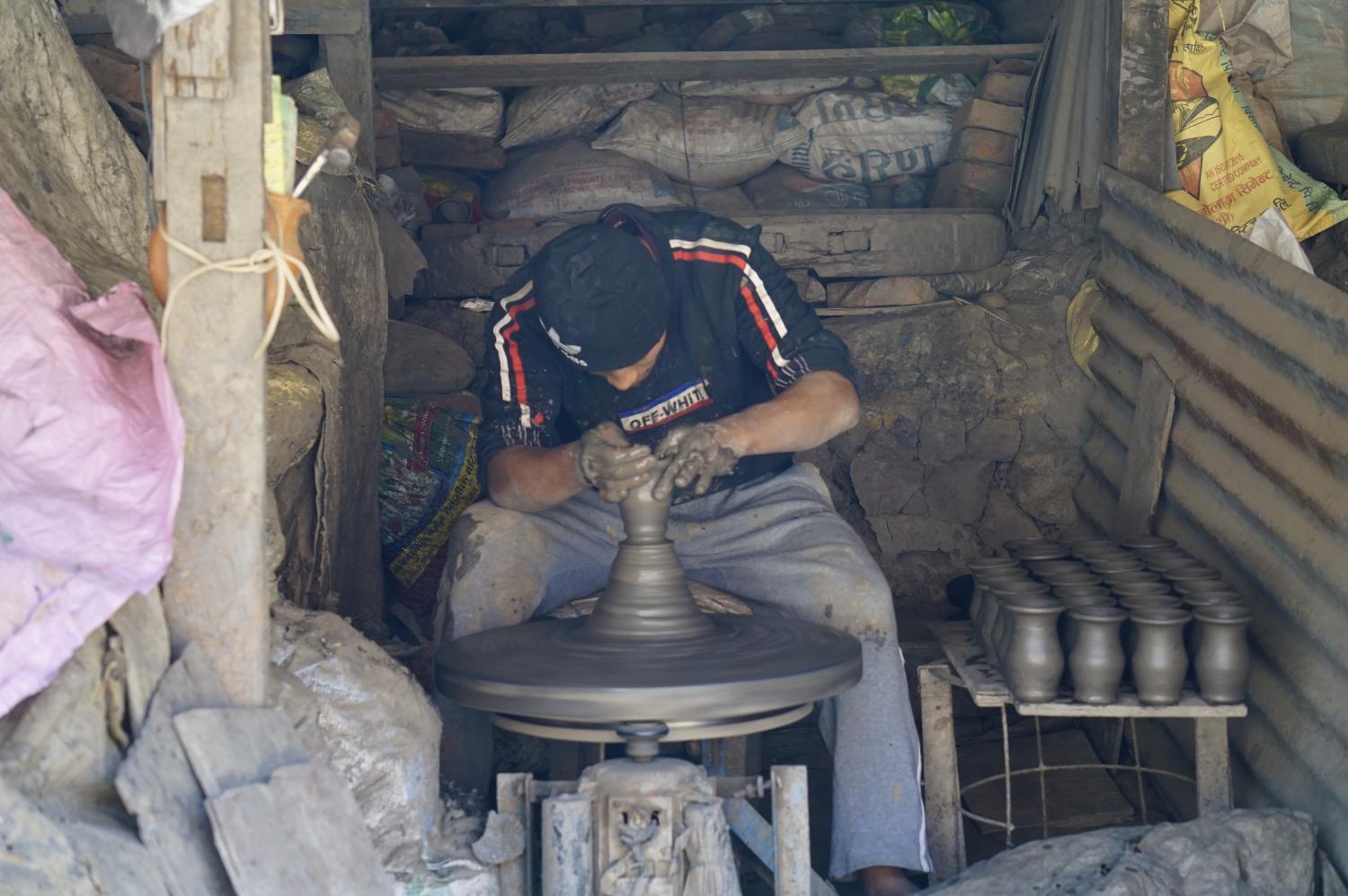
A Newari artisan creates earthenware.

World Peace Pagoda.
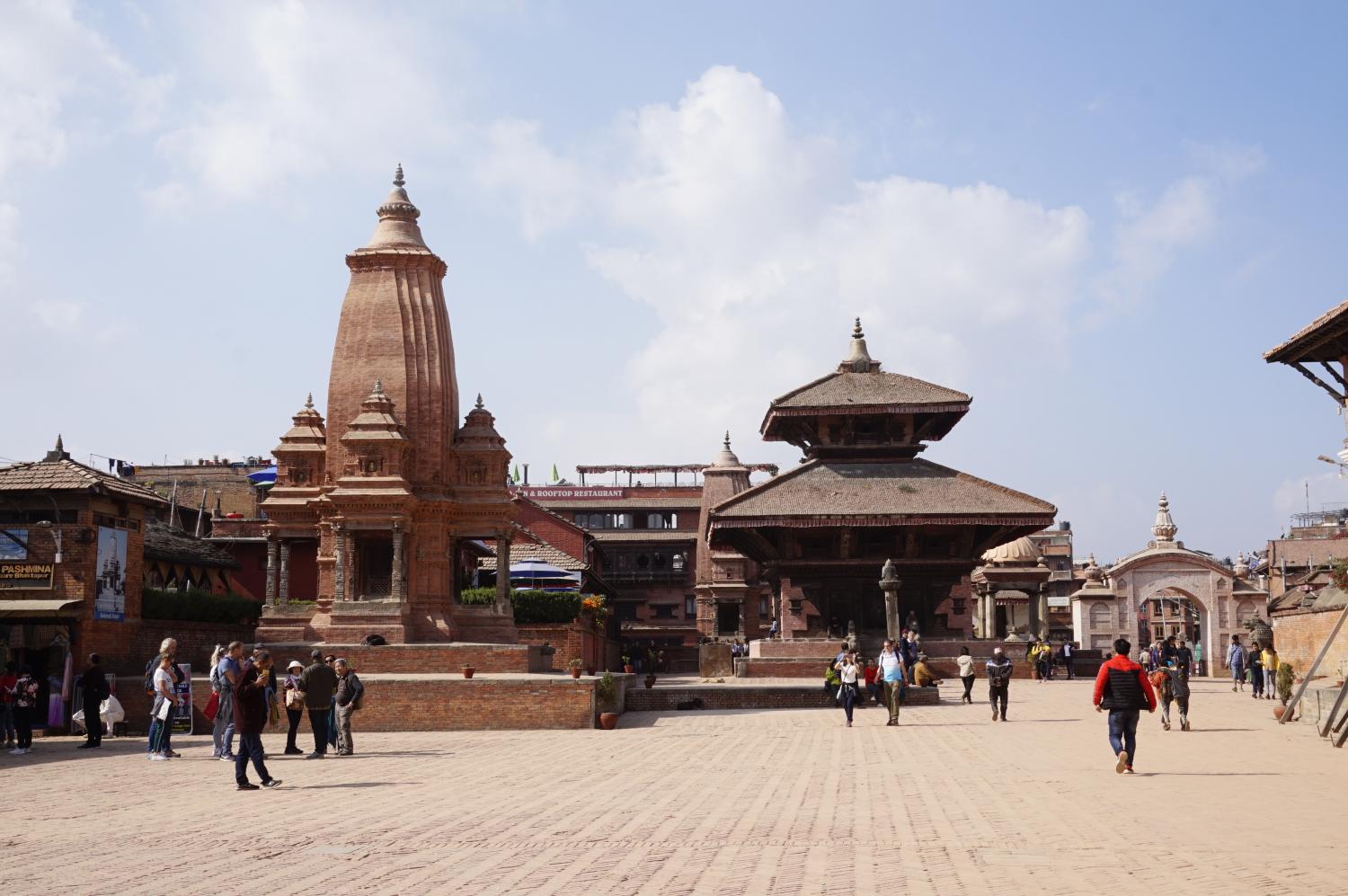
Bhaktapur Durbar Square.

Himalayan Front Hotel is the best point from which to watch the sunrise.
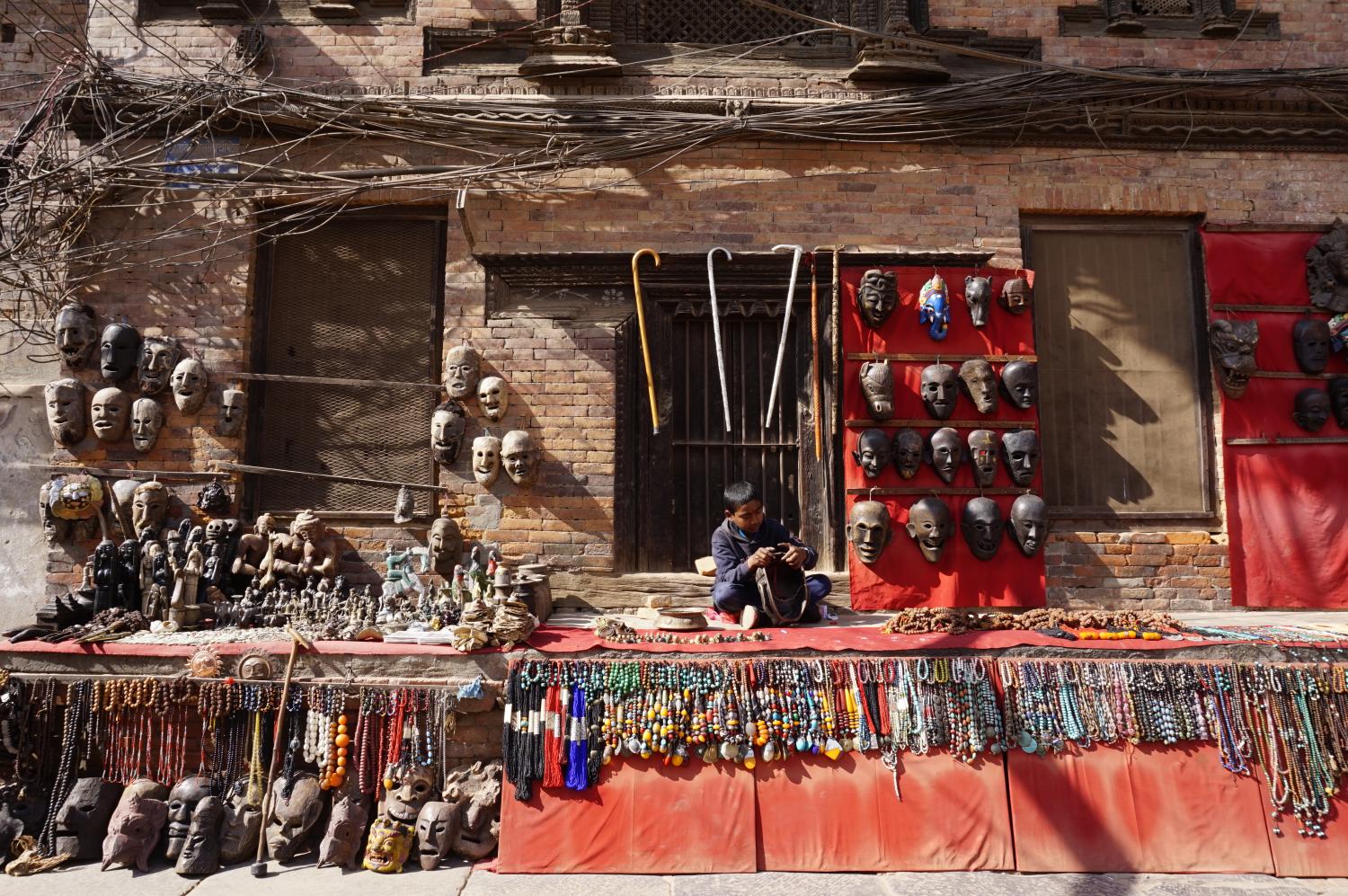
Bhaktapur Durbar Square is lined with shopping alleys.
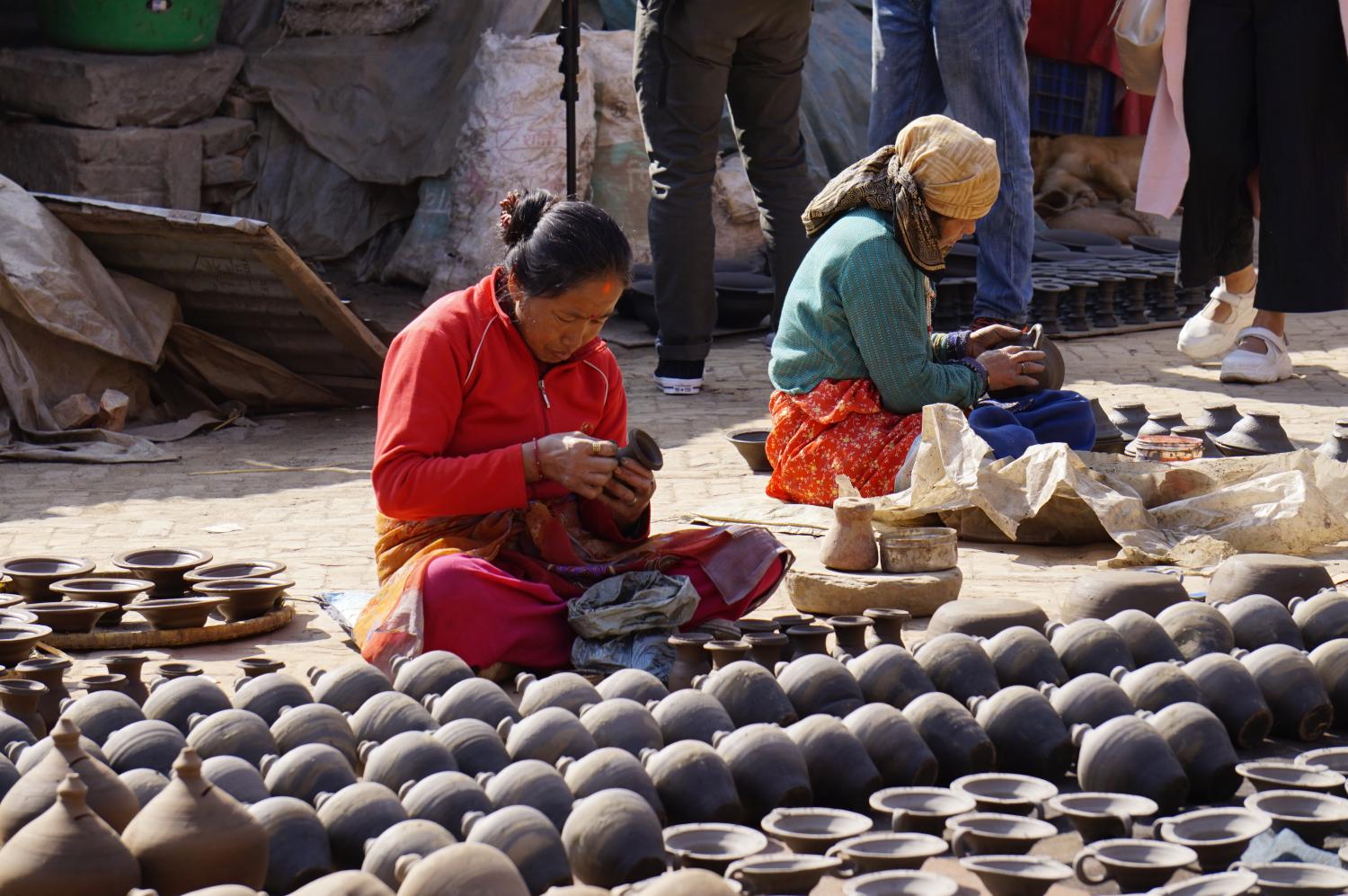
Pottery Square.

Bhaktapur Durbar Square.
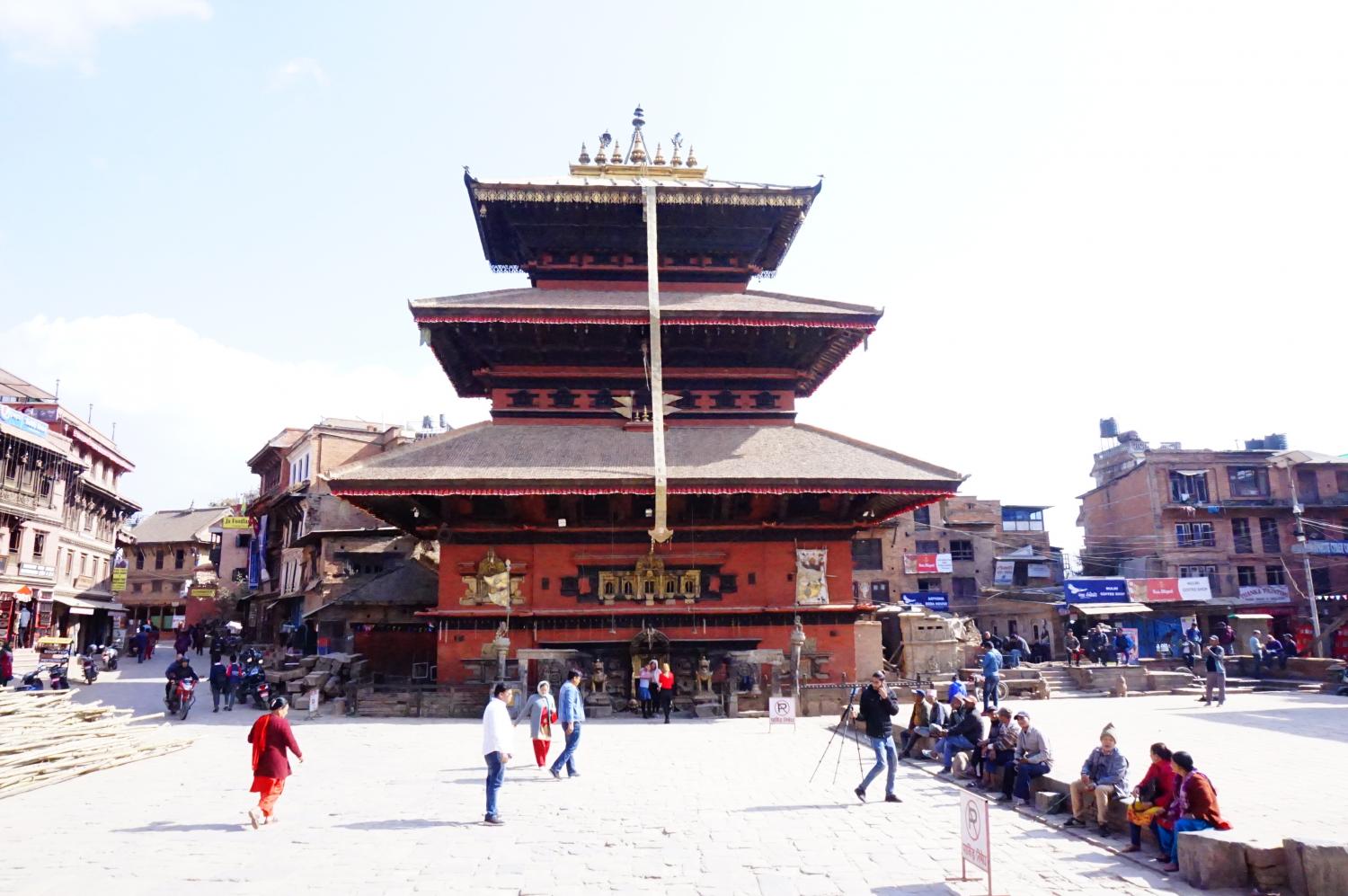
Bharavnath Temple.
Opposite the palace, the Vatsala Temple is undergoing major reconstruction after having collapsed in the 2015 earthquake. Devoted to the goddess Vatsala Devi, this grand stone shrine houses a silver bell, locally known as the Bell of Barking Dog, and which has been used for the morning prayer to the goddess Taleju and for daily curfew.
With temperatures ranging from 16-19C, I felt a cool breeze while strolling along narrow shopping alleys, packed with red masonry shophouses selling handicrafts, colourful traditional costumes, postcards and other keepsakes. On the Pottery Square's ground, a group of veteran artisans were showing off their skills in forming and shaping quality earthen pots and home furnishings, based on traditional techniques.
"The Newari community is famous for making yoghurt, black caps, black saree, earthenware and handicrafts, whose original techniques have been passed down from generation to generation," Karunakar said.
Walking along the narrow streets, we reached Taumadhi Square and found that the revered Bharavnath and Nyatapola Temples were still under restoration. The beautiful designs can still be seen, even though the main structures were damaged. The rectangular, three-storey Bhairavnath Temple houses a gilded statue of Bhairav, the cruel manifestation of god Shiva.
The five-storey Nyatapola Temple is the biggest and highest pagoda in Nepal, built to be symbolic of the five basic elements. Devoted to Siddha Lakshmi, its staircases are graced with carved stone statues of elephants, lions and guardians.
It's a short walk from Nyatapola Temple to Dattatraya Square, home to the sacred Bhimsen Temple. It's the oldest monastery in the capital city and draws attention from tourists, with exquisite architecture like peacock windows and water spouts. Then we headed northwest to Pashupatinath Temple, which stands on the banks of the Bagmati River. A 15-minute drive from Dattatraya Square, this old temple was built in the 5th century and later revamped several times during the Malla dynasty.
One of the most religious sites for devotees of the god Shiva, this holy monastery complex features the Aaryathat ground used as the outdoor crematory and the courtyard of white pagodas dedicated to other Hindu deities, while the main pagoda houses a Shiva lingam and the largest statue of Nandi the Bull. During spring season, more than 100,000 Hindu pilgrims, both from Nepal and India, will come to celebrate the Maha Shivarati festival.
After sundown, we continued to Boudhanath Stupa in the east of Kathmandu. Built by Tibetan pilgrims, the capital city's largest Buddhist stupa was designated a World Heritage Site in 1979 and took its inspiration from the Gyangtse of Tibet.
Sitting on the ancient trade route to Tibet, it has been a pavilion for merchants to take a rest and perform daily rituals for centuries. The gilded pagoda is adorned with the eyes of Buddha, the symbol of awareness, and has 13 stages with the grounds lined with 108 seated Buddha images and copper prayer wheels.
In the morning, we packed our bags, ready for a one-hour flight to the resort town of Pokhara. Standing on the border between Tibet and India, it's a popular holiday escape for local and foreign vacationers to enjoy hiking, trekking, paragliding, ziplining and bungee jumping.
Its history began after the 16th century, once Mongolian and Indo-Aryan migrants left their houses on the Himalayan mountain ranges and settled on flat land to breed animals and cultivate plants. In the 1960s, Pokhara became a business hub for Indian, Tibetan and Chinese traders, but the construction of two highways to connect Lumbini and India in 1970 removed it from the trade route.
With sharp eyes, Vietnamese and Indian migrants recognised the potential of a town rich in beautiful nature. They set up a community along the lakes and offered a wide choice of boutique hotels, restaurants and souvenir shops, making it a stunning tourist spot until now.
After some refreshments to boost our energy, we climbed to the summit of Anadu Hill, home to the World Peace Pagoda. It's the brainchild of Nichidatsu Fujii, a founder of the Nipponzan Myhoji Buddhist organisation, who promised to build 100 World Peace Pagodas around the globe to convey a message of peace after he witnessed the outcome of the devastating bombing in Hiroshima and Nagasaki.
Fujii expanded the peaceful border to Pokhara in 1973, with his 71st white pagoda taking 26 years to finish construction amid political conflicts. Inside, it is enshrined with the sacred relics of Shakyamuni Buddha from India.
Back to the earth, we continued to the Gupteshwar Mahadev Cave. Located only 2km from downtown Pokhara, an orange spiral staircase led us underground, where a Shiva lingam stands in the middle of the cave. Deeper, we walked through a narrow rock chasm to admire a natural pond and limestone in different forms.
In the south of the town, the International Mountain Museum is a must-visit place for amateur and professional mountaineers to learn about Nepal's mountain ranges. The museum offers a video presentation and three exhibition galleries depicting the world's mountain systems, the unique culture of the mountain people and Nepal's mountain geography, plus a rare collection of trekking equipment, apparel and photographs from veteran mountaineers.
We got up early in the morning and climbed to the rooftop of the Himalayan Front Hotel, where we stay overnight. It's the best spot from which to watch the sunrise over Himalayan mountain ranges, while the sky is brushed with streaks of blue and orange.
After breakfast, a sightseeing tour starts at Bindabasini Temple, which is situated atop a hill. Famous for its diverse architectural designs, this temple compound is lined with six hallowed shrines, dedicated to Parvati, Vishnu, Shiva, Sarasvati, Ganesha and Hanuman, making it a religious centre for Hindu devotees both in Nepal and India.
Built 350 years ago by the last king before Nepal would be unified, a white Shikhara-style dome shrine houses a statue of Parvati, Shiva's wife, in the destructive manifestation of a demon.
Popular for local couples to host a wedding ceremony, the Vishnu shrine was built in the Bihara-Nepali style and displays statues of Vishu in three different manifestations: Krishna, symbolising love; Nairai, symbolising wealth; and Rasmi with Sita-Ram, symbolising victory.
Then we boarded a colourful paddling boat for a relaxing cruise to the 250-year-old Tal Balhi Temple. It's like a sacred island in Phewa Lake, boasting a statue of Pavarati, traditional Napali architecture, and beautiful landscapes of dense jungles, mountains and waterside.
Back on land, we switched to a road trip to our next destination, Chitwan, where we hoped to enjoy a fun safari.
Travel info
- Nepal Airlines offers three weekly direct flights between Bangkok and Kathmandu. The flights are available on Monday, Wednesday and Friday, with a flight time of around four hours.
- Check out fares at nepalairlines.com.np.

